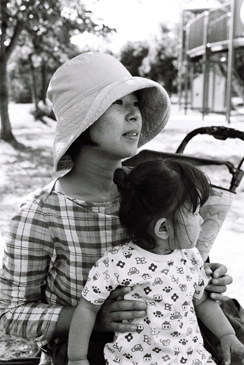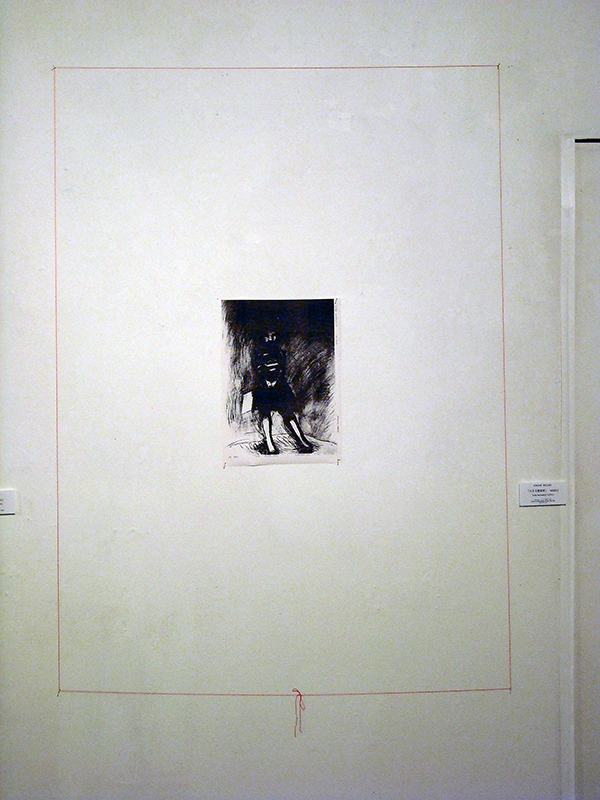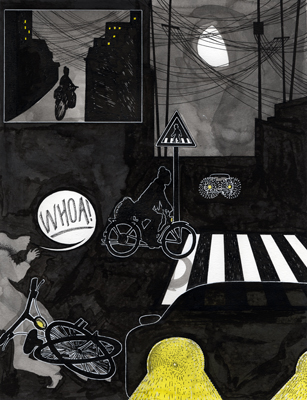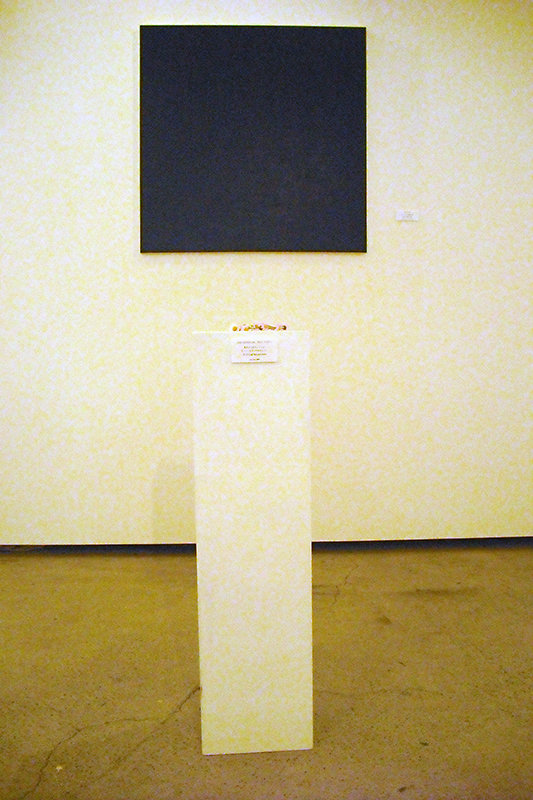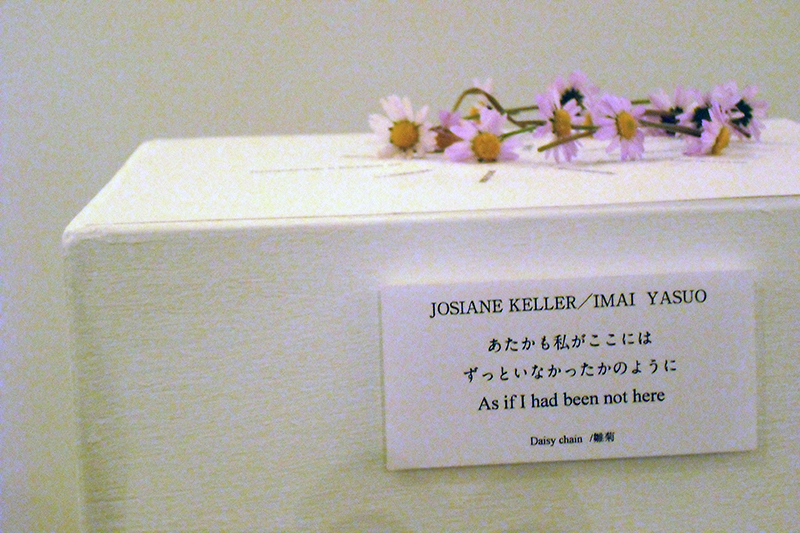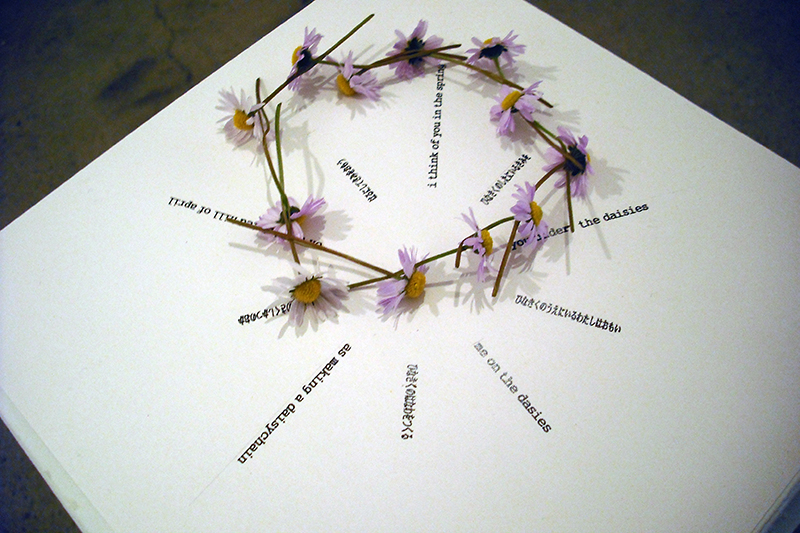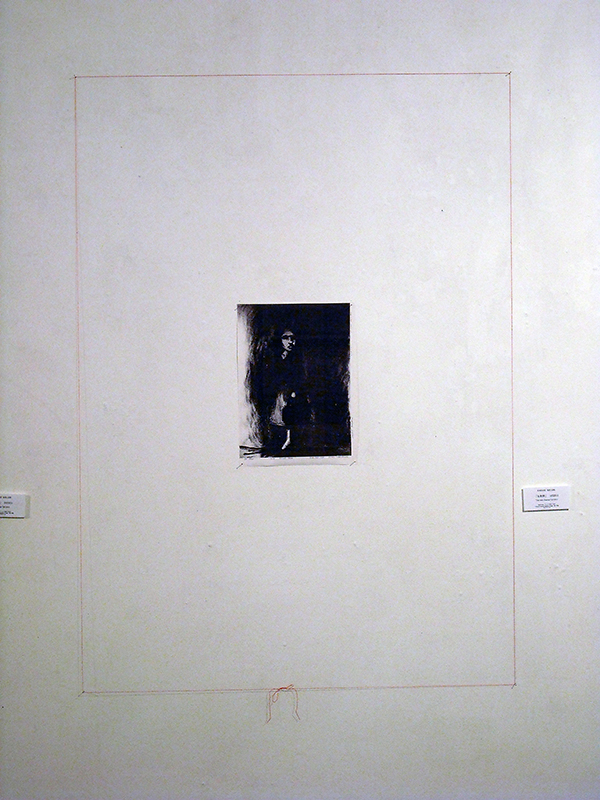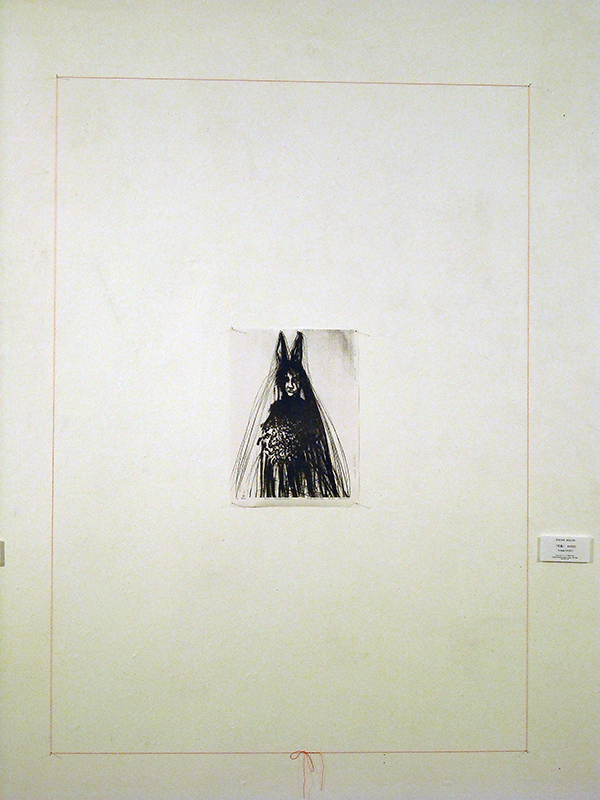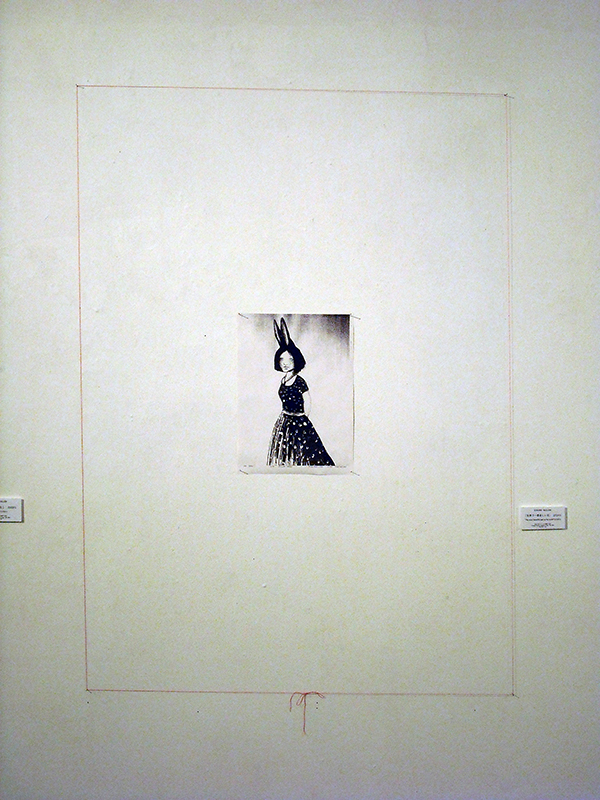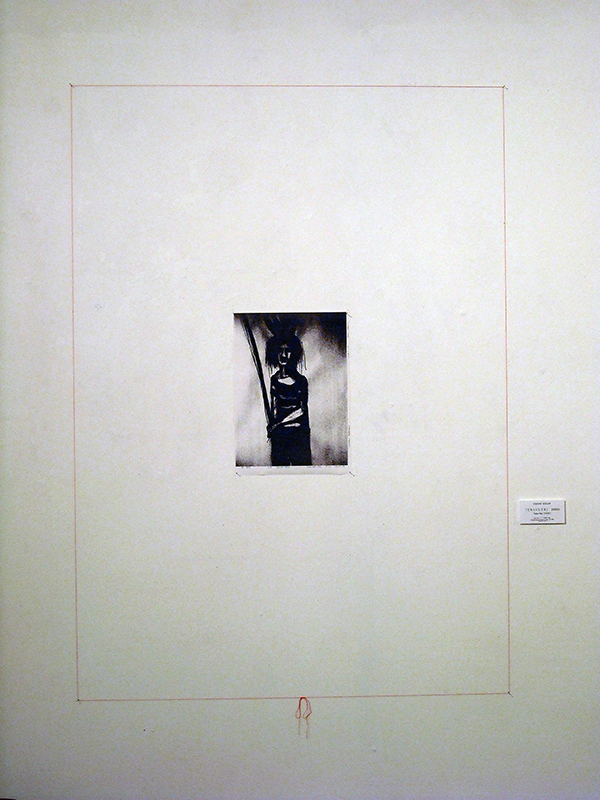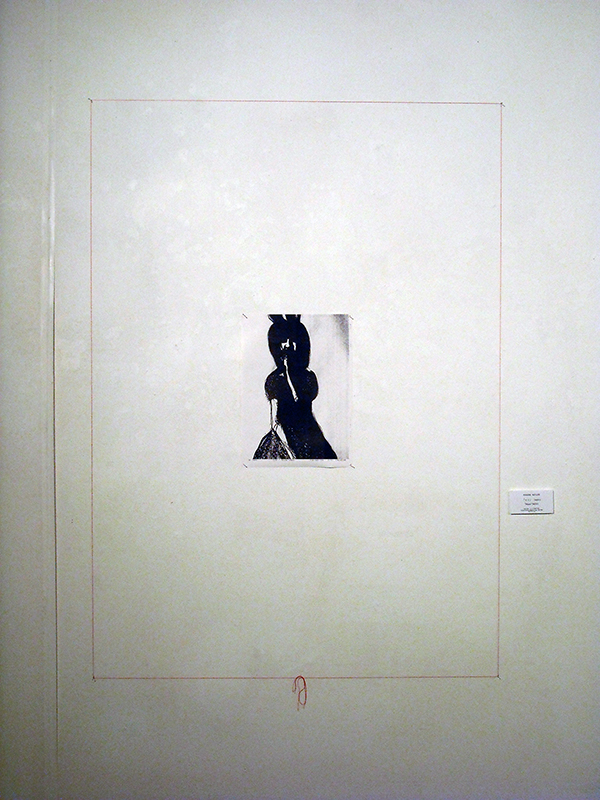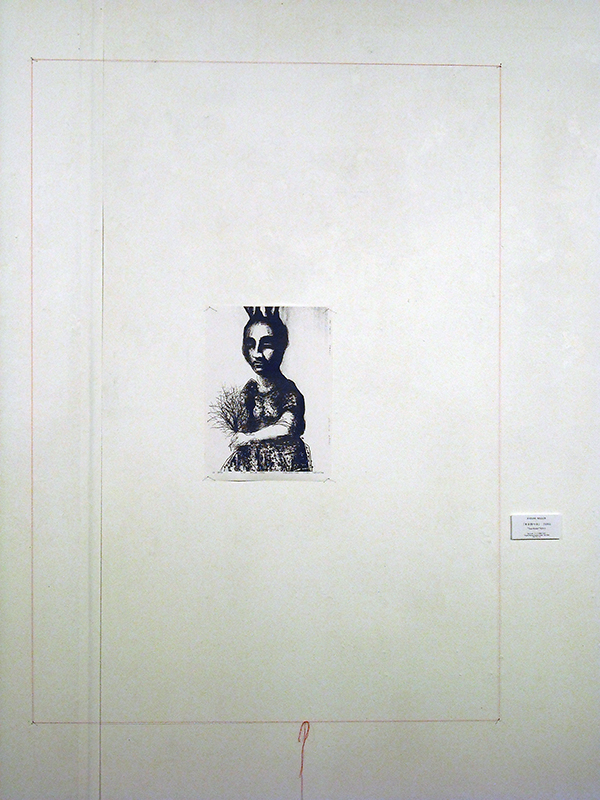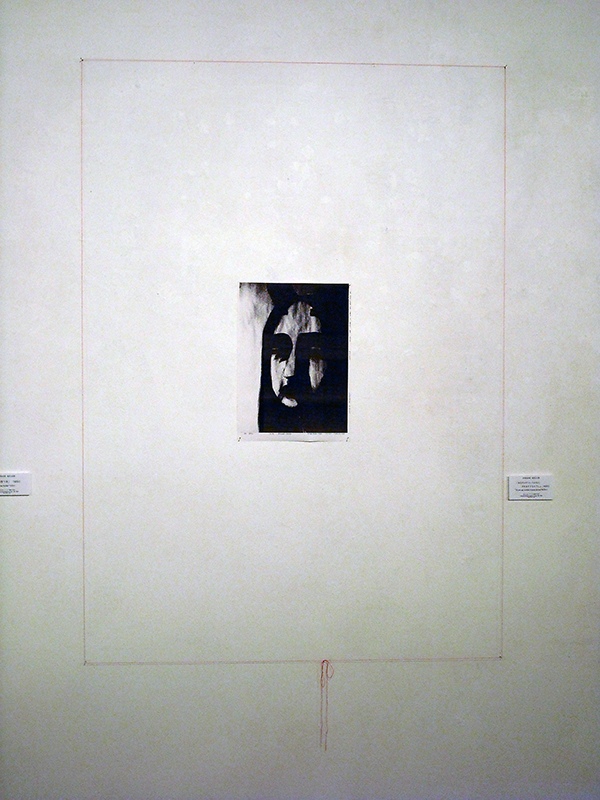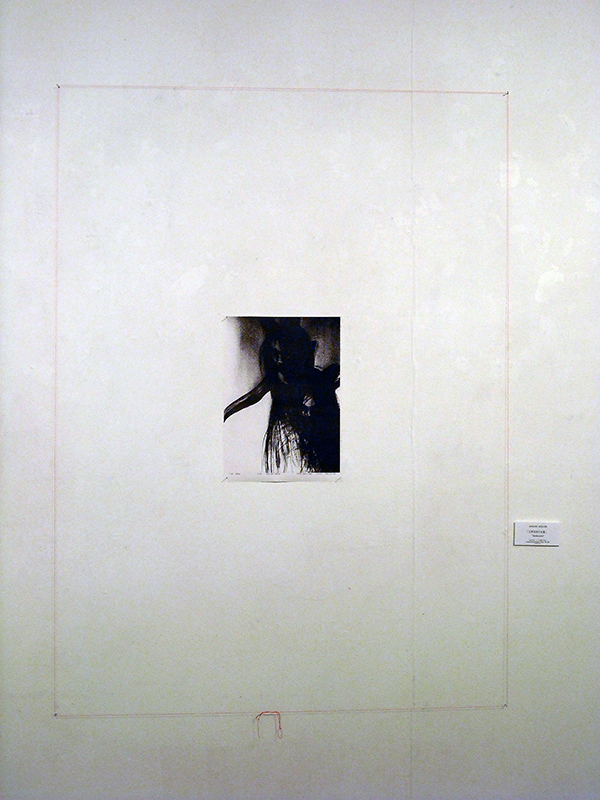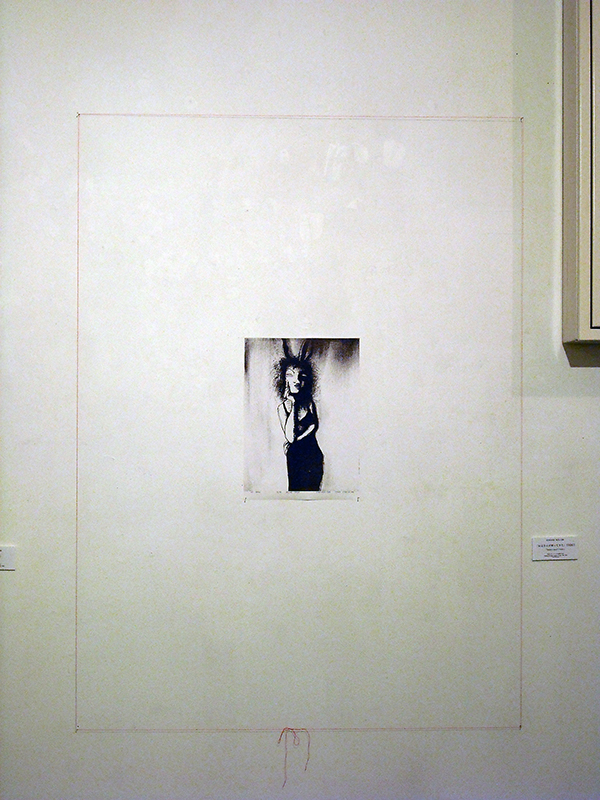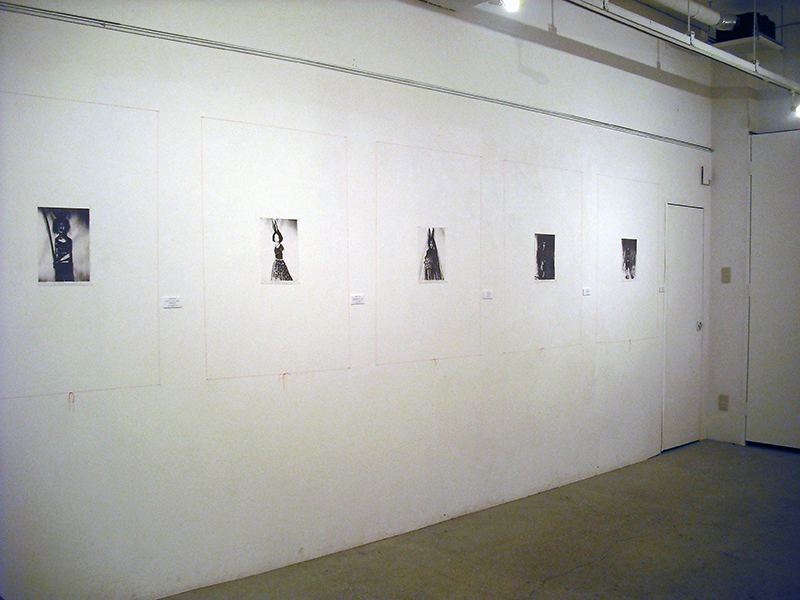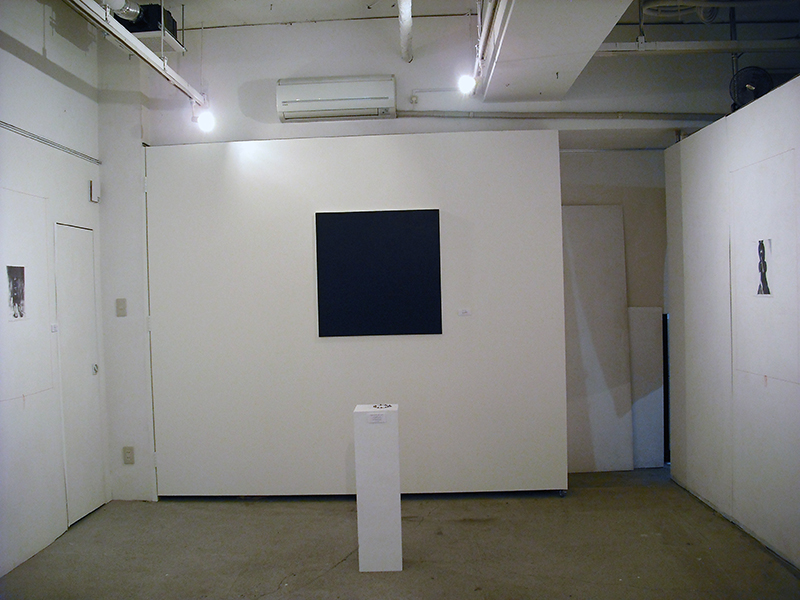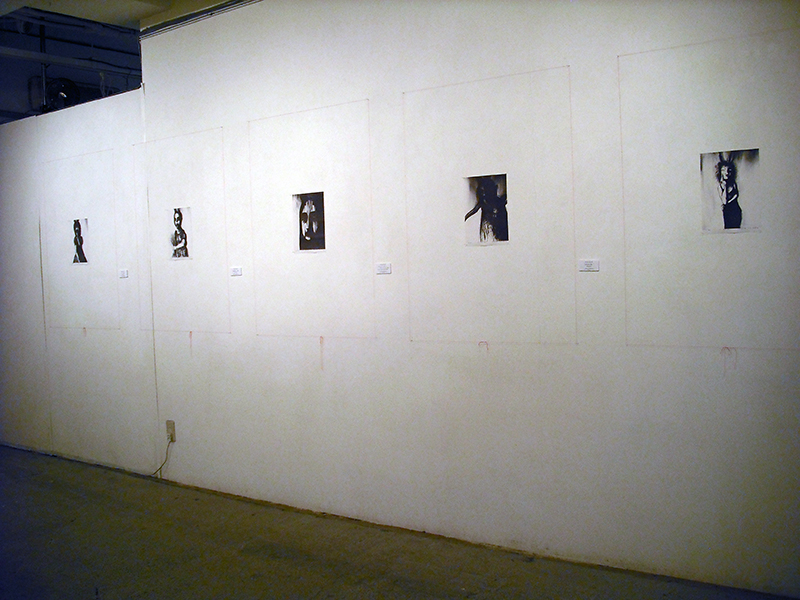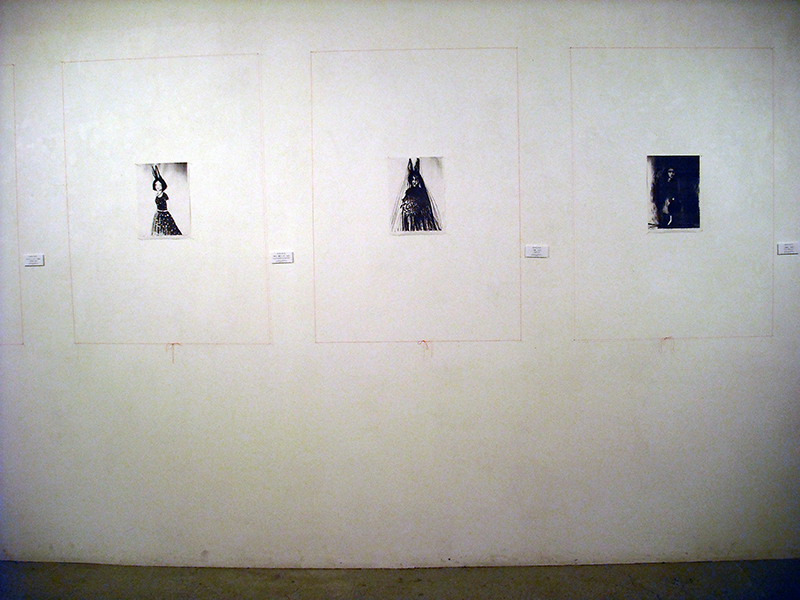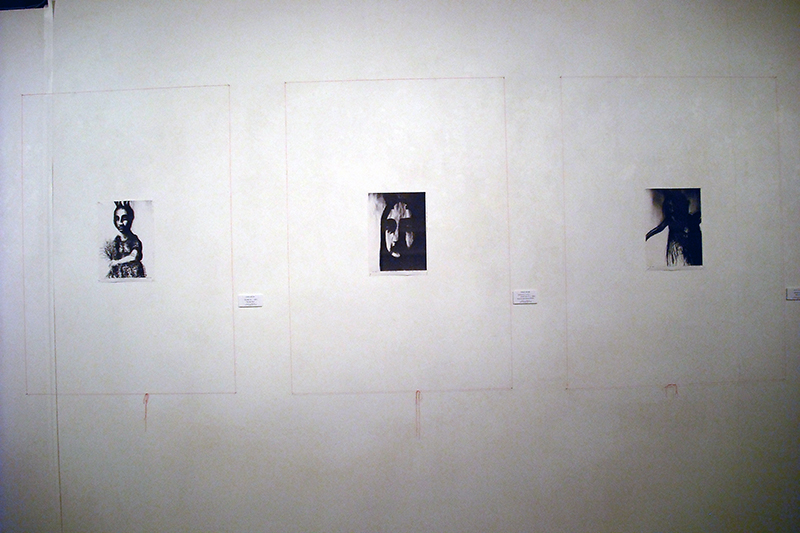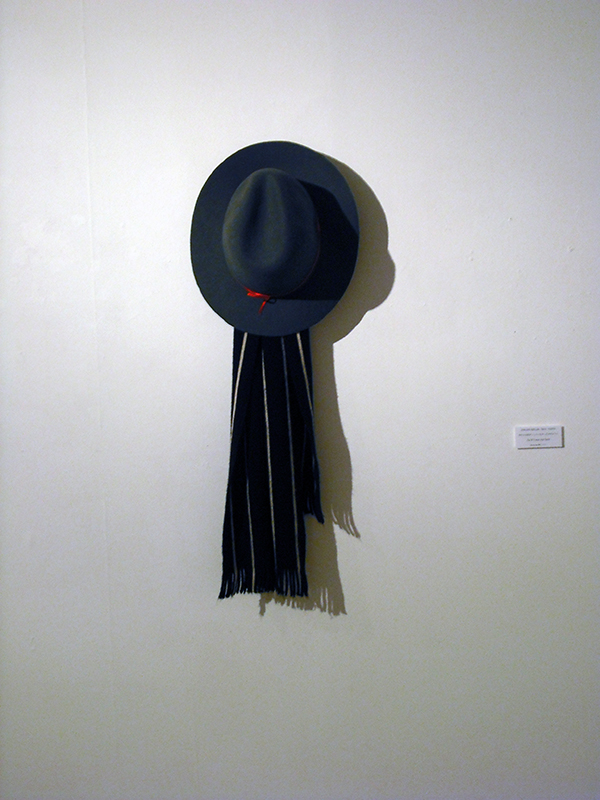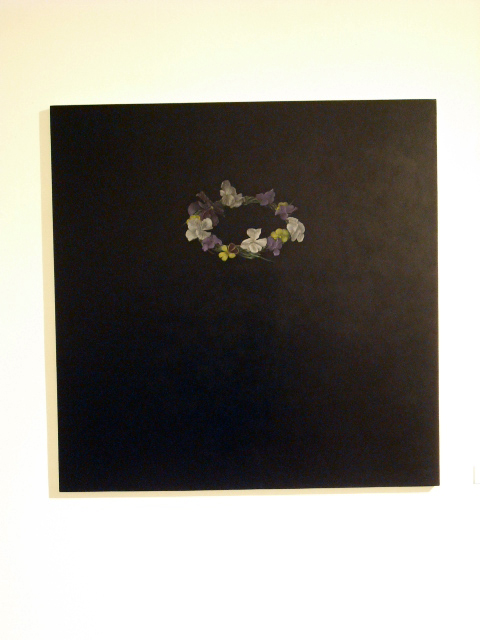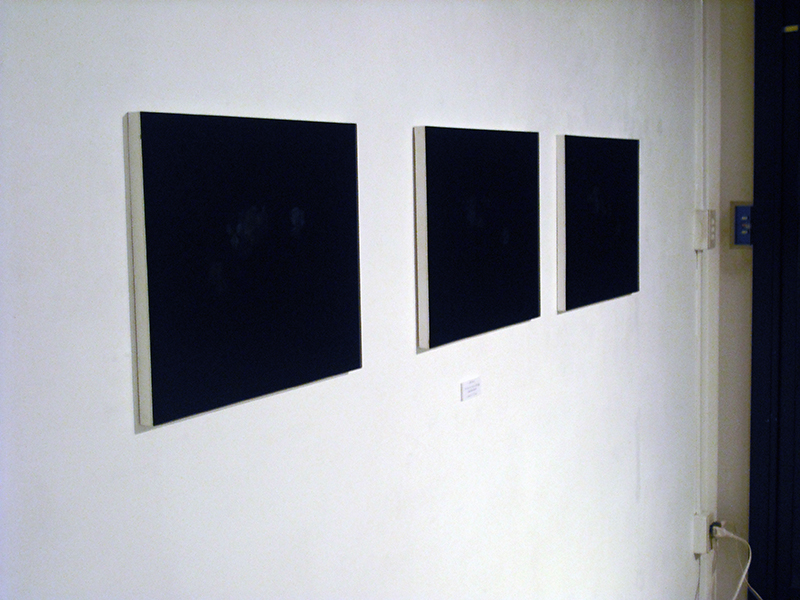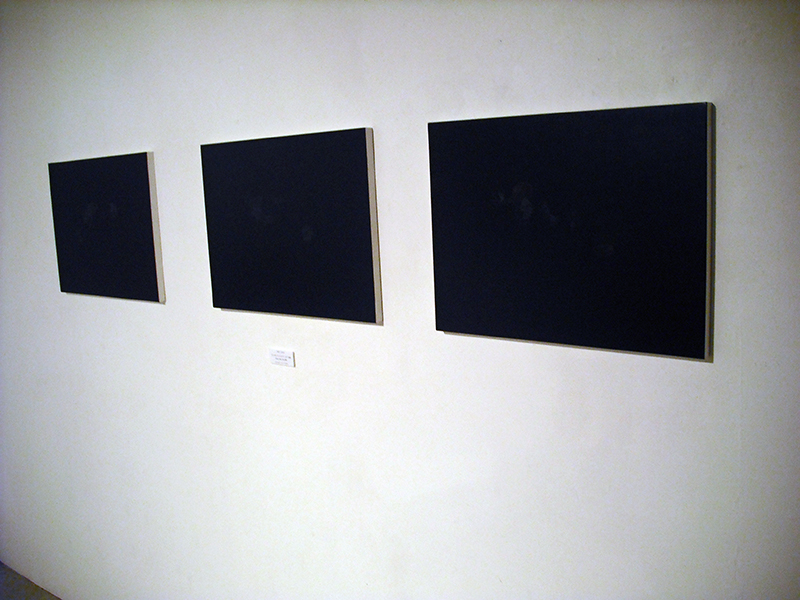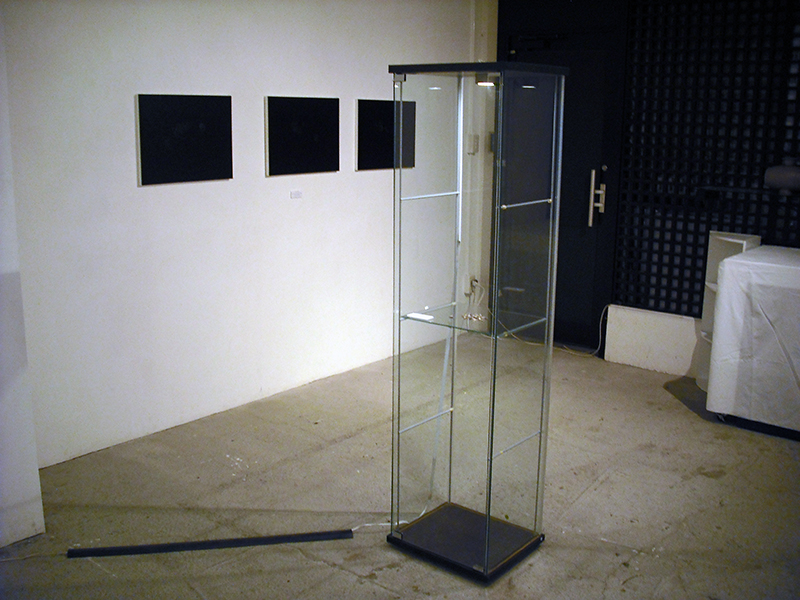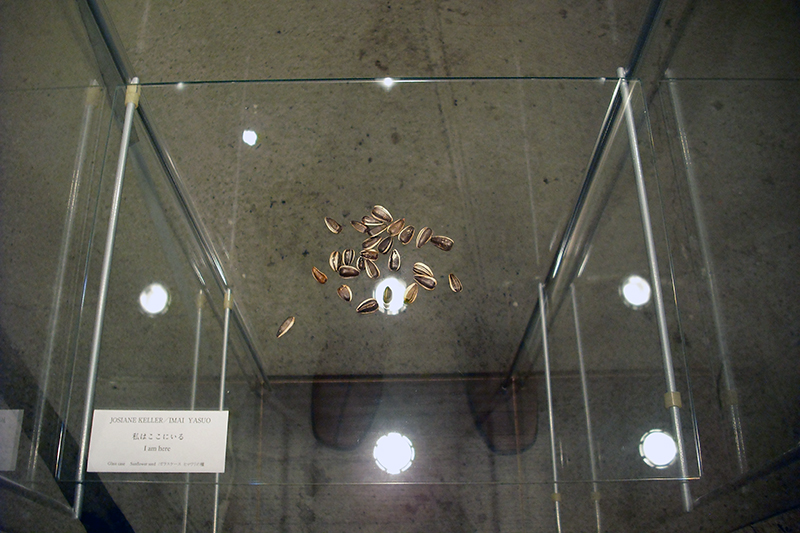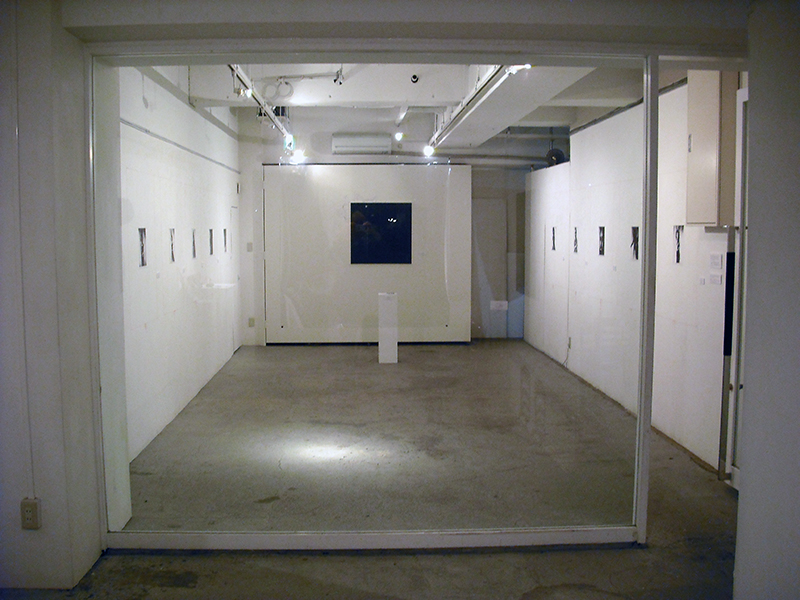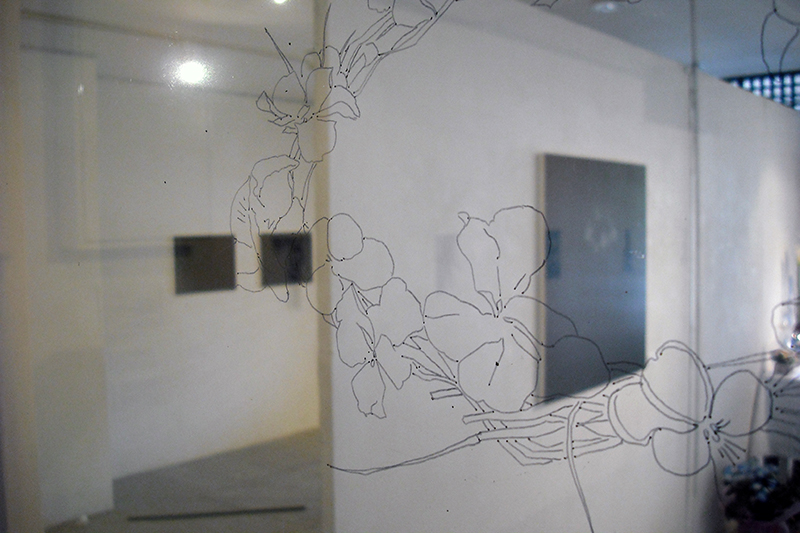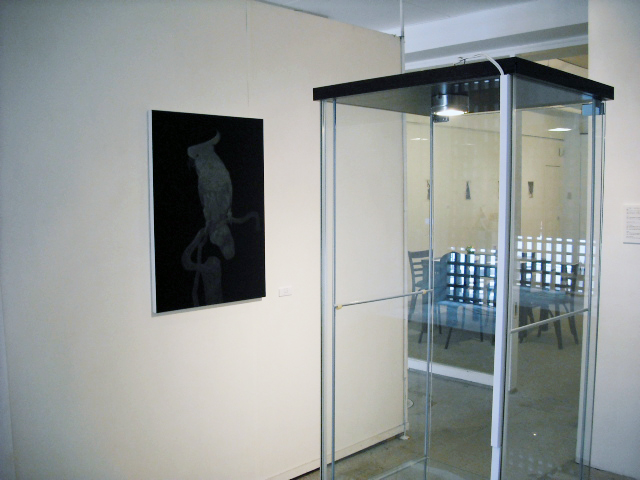“What is the difference if I am here or not here?” – exhibition at Gallery JARFO Kyoto, Japan.
Today marks the ten year anniversary of the March 11-2011 Tokuku earthquake, tsunami, and Fukushima Daiichi nuclear disaster. At the time it happened I was on a long term stay in Kyoto, Japan, preparing for an exhibition at JARFO in May. I had entered in December and planned to stay in Kyoto for at least 6 months. My daughter, at the time an elementary school child, was accompanying me, enrolled in Japanese elementary school. I decided to write down in simple English accessible to everyone what happened on that day and the following days, as I remember it; I currently assume, this format is a good one, maybe the only useful one, to create something meaningful for mankind after the hype of the moment has worn off to have a chance of understanding a little bit about life on earth.
On the 11th of March sometime during the day my daughter’s elementary school teacher, who I was friends with at the time, called me up and told me to switch on the TV. She said, there has been a big earthquake and a tsunami, it was on all TV stations and I should look. I did and watched an air shot of the tsunami approaching a coastal city, I think it was Sendai mostly, although also other cities got hit. From the TV shot the tsunami seemed to me both relatively slow and fairly low, in that sense different from the tsunami that had hit Thailand, India and Sri Lanka December 2004. At the time all TV stations showed this wave over and over again, and a voice inside of my head asked “Are there actually any nuclear power plants in Japan?”
In 1996 I had come for the first time to Kyoto in order to find a Japanese ceramic master to study tea ceramic with. I at first stayed two years, studying with a master in the mountains of Uji, whilst in the beginning living on the weekends in a spare apartment of a kimono designer in Nishijin, Kamigyo-ku, Kyoto. Later I got the chance to rent a small house in the outskirts of Kyoto, Ukyo-ku (which I would be able to use as a base when I lived in Kyoto for many years), and working as a ceramic and painting studio assistant in an Outsider Art center in Shiga. Several of the clients I worked with at the time are now sought after Outsider Art stars. Japan for sure has had the strongest influence on my life and in brief, I got very involved in Japanese life with everything what that means, and for many years spent every year at least a few weeks or if possible months in Kyoto, usually during summer, depending on time, budget and homesickness. But Japanese life is structured in phases, like seasons, that each are separate from each other and each are celebrated carefully by society, where Western society might be more casual. I have experienced that the strongest during my daughter’s elementary school age, when although technically not a single mother I still “looked like a single mother” in some sort of unclear family situation, when Japanese people dedicate themselves to raising children I was still sort of open to my work, friends, and organizing art shows, and somewhat loosing the connections to many of my close friends from earlier years that I felt I had “grown up with” that had settled down and raised over time typically multiple children, inclusive people who had prior to their marriages shown promise to become talented artists.
Josiane Keller “Nanako is now a mother” (2005)
I only recently understood this sensation watching Kurosawa’s “Seven Samurai” when ronin Katsushirō begins a relationship with the village girl Shino. Even though he and his comrades effectively protect the village against bandits in the end, after this task for which the samurai were hired is completed, she abruptly ends the relationship with him and joins the harvest, as outside of the unusual situation of a crisis she sees no connection between the two, no matter how close they have been only a moment before. I have experienced this kind of pragmatism many times in Japan, and when it comes to this point there is no discussion because the situation is not seen as a form of decision making but a logical step in life in order to move forwards without any options, where in the Western world people would act differently and be very surprised at this.
In 2011 I was in this strange situation, raising a child in Japan, no father in sight and it was not clear what I was doing, at least it was not clear what more or what else I could possibly want from life than exactly what I was already doing, being a mother. In this time I had been offered an exhibition in a local gallery (JARFO), and if I wanted the opportunity to invite a second artist to collaborate with, and chose a friend of mine at the time, the painter Yasuo Imai. We decided on the theme and title “What is the difference if I am here or not here?“, working each one of situations of loss we were dealing with. With the tsunami and rising death toll in the country we did not change the title, but the underlying concept of the show several times. And yes, there are indeed nuclear power plants in Japan and Fukushima Daiichi was one of them, damaged by the seaquake and the following days TV stations would show various attempts to extinguish the burning reactor that already then seemed bizarre ideas to put it mildly, such as flying over it with a helicopter and pouring water from it onto the burning tower.
Parallel to the rising awareness that there was an issue bigger than a burning newspaper Japan’s community spirit kicked in in the form to try to reassure people and try to avoid despair and mass panic. This would manifest it self if one would verbalize concern about radioactive risks people would laugh and say it was no more radioactivity than “getting an x-ray at the dentist“. No security measures were even suggested, kids would still go to schools and play outside in the typical sand playgrounds in front of Japanese elementary schools and eat school lunch with outside grown spring vegetables, such a spinach and other greens, mushrooms, and dairy. No warnings were issued, instead only repeatedly the reassurance all was fine. If one would discuss the topic further people would laugh it off and eventually get angry. In downtown Kyoto concerned foreigners could be seen disputing in front of travel agencies if or if not they should leave. Eventually it was Yasuo Imai, my fellow exhibitor at our show in the making who told me, “You should leave for the sake of your child’s health.” He made it very clear that the news were downplaying the risk.
We left and my contribution work to the exhibition, 10 large scale graphite drawings, of which 5 were completed in Kyoto and five outside of Japan in America, were photographed in A4 format and those were sent as fax live during the opening event. On the back of the drawings I glued various newspaper clippings from both Japanese as well as Western newspapers, reporting about the development of the situation and some bizarre advertisements like life insurances and the likes popping up. The news did not match, Japanese news stated possibly Western measuring systems of radioactivity were not in line with Japanese ones, and finally admitted defeat and helplessness in an unmanageable situation. The images one by one when arriving by fax (format A4) at a the time of the opening were hung up on the wall, where with pins and red string the size of the original drawings (78 cm x 110 cm) had been marked.
[* To view the original drawings and see the newspaper clippings, click HERE.]
Josiane Keller “Little Nationalist 1632011″ faxed copy with red string marking out size of original drawing (2011)
The show must have been wonderful, we had not only live fax sending, also live classical koto concert, an all in all clear attempt to create something positive as a group to participate and enjoy, although I only know it from what friends told me, photographs and our comment book, and although in the recent years towards 3/11 I experienced in Japan an increasing Anti-Western tendency and as one particular element noticeably strong increase of road rage, and one acquaintance, an Irish printer, was killed on her bicycle by a car (*this behaviour was so prominent that a few years previously I even had included it as a topic in a graphic novel I was working on at the time during a kenkyusei project at the Manga Department of Seika University of Art);
Josiane Keller “Usagi-chan – almost an accident” (2009)
After the tsunami people again were supportive of each other inclusive towards foreigners, so when I left with my daughter to the airport on the train station an elderly lady helped me carry our suitcases, only a couple of weeks previously this would not have been very likely.
The damaged nuclear power plant has since not been repaired nor shut off. It was forbidden for foreigners to report on the situation of Fukushima Daiichi and it was forbidden to Japanese people to discuss it with foreigners. Contaminated cooling water is partially being stored, but Japanese government has announced storage space is running out and will pour the water directly into the ocean. It has likely entered ground water. Farming areas have been opened soon again after the disaster and reports on in particular children developing thyroid problems are being hushed. Worldwide people have not stopped eating seafood, inclusive seaweed, nori, which, ironically, is recommended as helpful against thyroid cancer.
At last I am adding these links in English (published by Gallery KOBO in Seattle), not necessarily to ask for donations, but for additional information and a brief insight in the Japanese experience of this situation in English language:
3/11 – The Tsunami: The First 3 Days [*available until January 9, 2022]
Please do not throw the water generated by the Fukushima Nuclear Disaster into the sea
Activities of “Mothers’ Radiation Lab Fukushima”
Yasuo Imai “a daisy chain – as if I had not been here” (2011)
Yasuo Imai “a daisy chain – as if I had not been here” (2011)
Yasuo Imai “a daisy chain – as if I had not been here” (2011)
Josiane Keller “The Lady Teacher 1632011″ faxed copy (2011)
Josiane Keller “A Bride 2032011” faxed copy (2011)
Josiane Keller “The most beautiful ears in the world 2232011” faxed copy (2011)
Josiane Keller “Either Way 2332011” faxed copy (2011)
Josiane Keller “Mami 542011” faxed copy (2011)
Josiane Keller “Treeholder 742011” faxed copy (2011)
Josiane Keller “If you say so then it must be true 842011” faxed copy (2011)
Josiane Keller “Wettlaeuferin 1242011” faxed copy (2011)
Josiane Keller “Daddy’s back 1742011” faxed copy (2011)
Josiane Keller “faxed drawing copies 1” (2011)
Yasuo Imai “a daisy chain – as if I had not been here and faxed drawings” (2011)
Josiane Keller “faxed drawing copies 2” (2011)
Josiane Keller “faxed drawing copies 1 – detail” (2011)
Josiane Keller “faxed drawing copies 2 – detail” (2011)
Yasuo Imai “hat and scarf” (2011)
Yasuo Imai “a daisy chain” (2011)
Yasuo Imai “3 black paintings” (2011)
Yasuo Imai “3 black paintings” (2011)
Yasuo Imai “painting and sunflower seeds” (2011)
Yasuo Imai “sunflower seeds” (2011)
Josiane Keller “Yasuo Imai – What is the difference – exhibition” (2011)
Josiane Keller “Yasuo Imai – What is the difference – exhibition” (2011)
Yasuo Imai “cockatoo painting and sunflower seeds” (2011)
